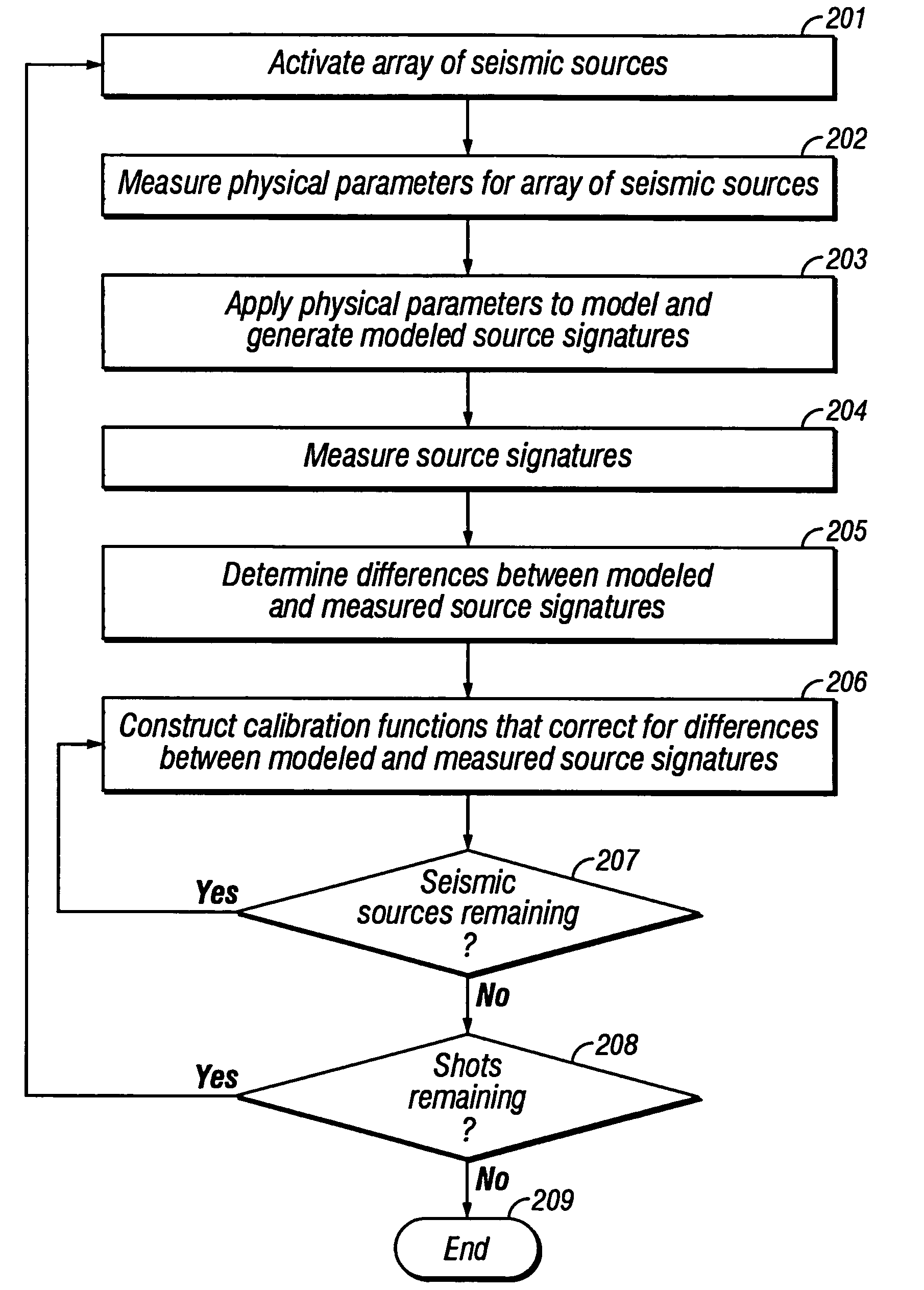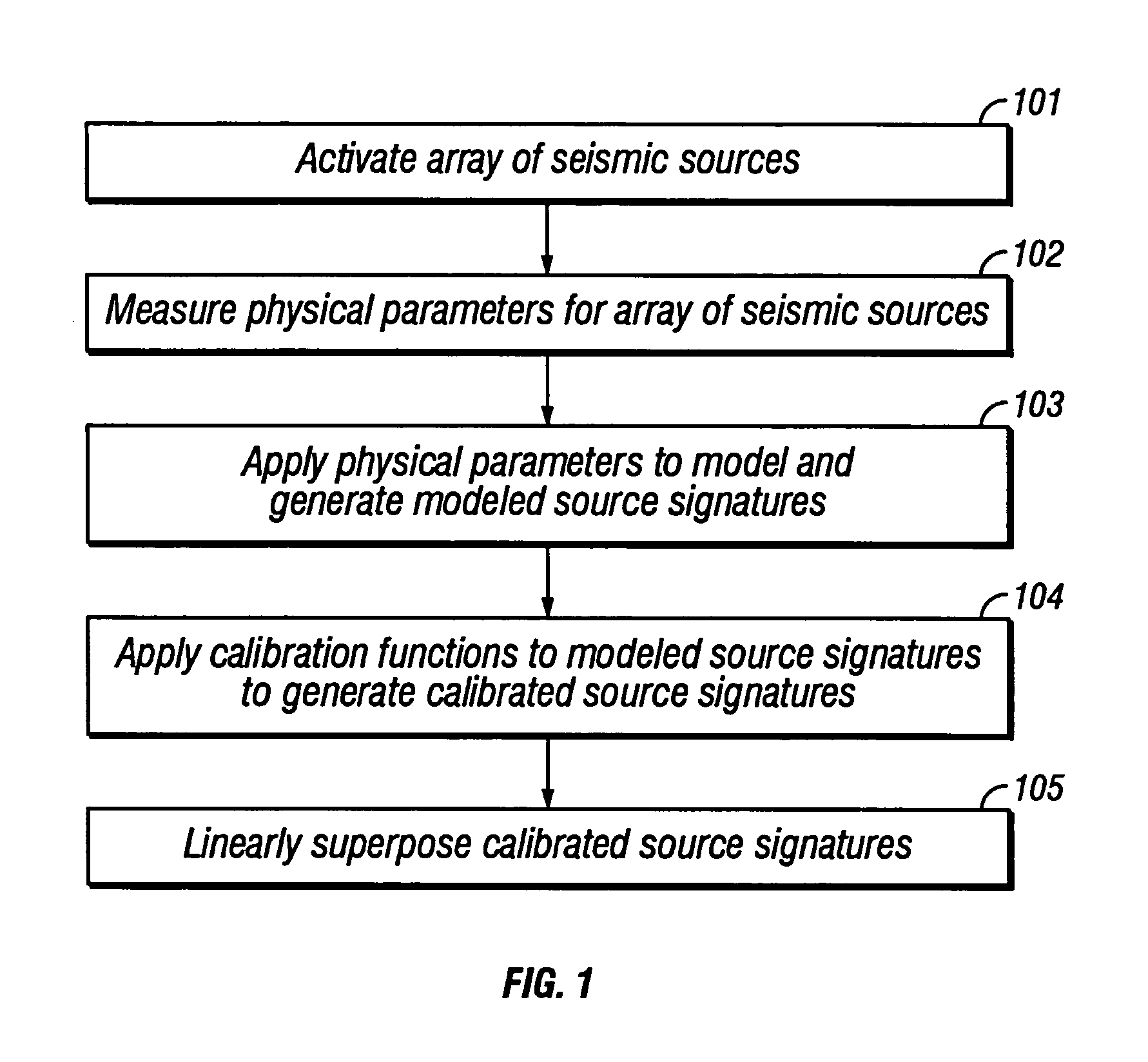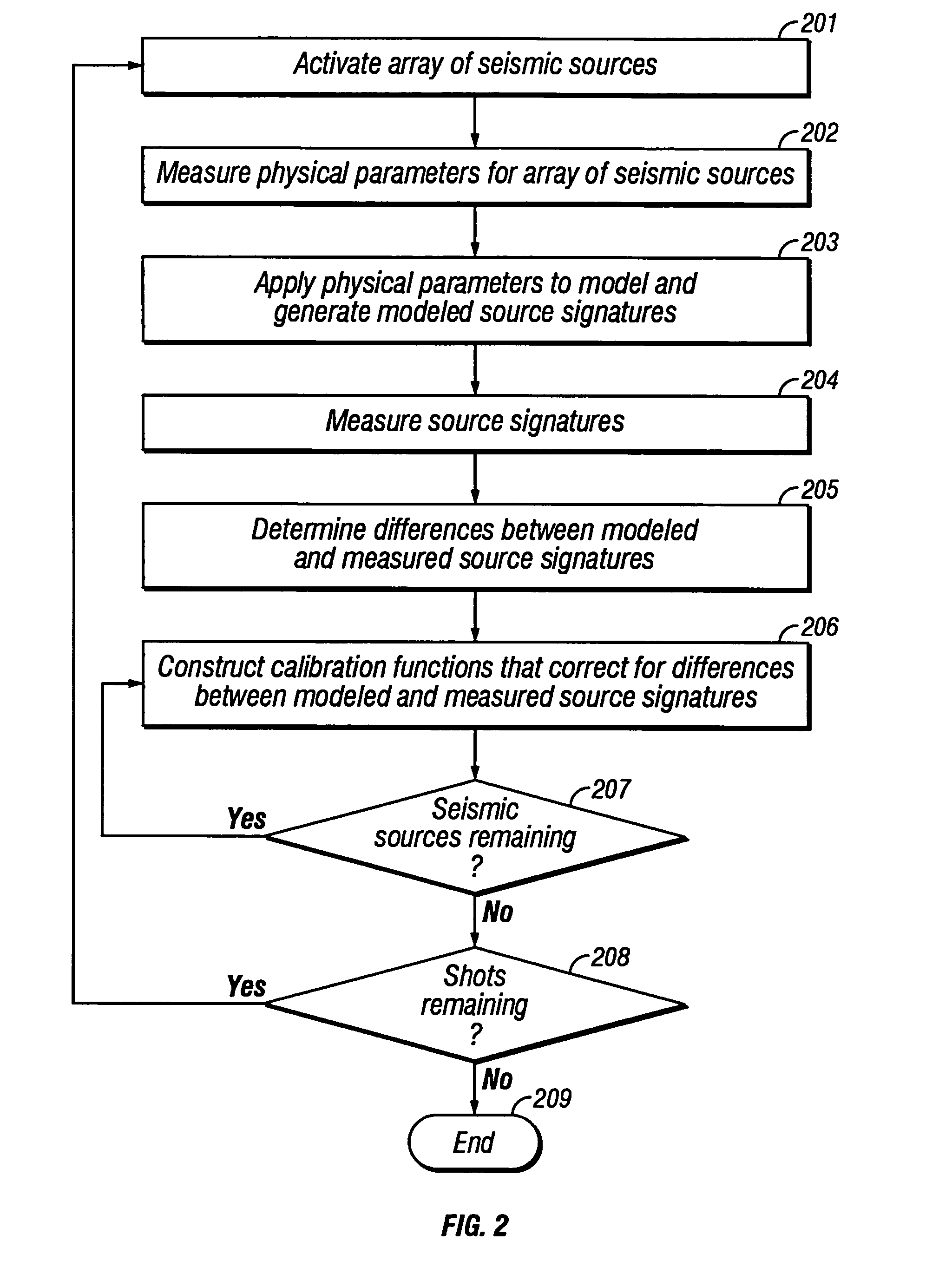Method of seismic source monitoring using modeled source signatures with calibration functions
a source signature and calibration function technology, applied in seismic signal recording, seismic surveillance, geological measurements, etc., can solve the problems of affecting the accuracy of seismic data acquisition
- Summary
- Abstract
- Description
- Claims
- Application Information
AI Technical Summary
Benefits of technology
Problems solved by technology
Method used
Image
Examples
Embodiment Construction
[0040]The invention is a method of seismic source monitoring for an array of seismic sources. The invention makes use of measurements of physical parameters which affect the wavefield generated by the array, a computer model to estimate a source signature for the array from the physical parameter measurements, and calibration functions to improve the estimate of the source signature from the model. The method of the invention produces a source signature which is a continuous function of distance and direction. Thus, the term “source signature”, when utilized with reference to the method of the invention, will designate a three-dimensional wavefield rather than a conventional one-dimensional source signature.
[0041]In one embodiment of the invention, measurements are made of physical parameters for an activation of the array of seismic sources. These measurements of physical parameters are applied to a computer model that outputs an estimate of a source signature for the array of seis...
PUM
 Login to View More
Login to View More Abstract
Description
Claims
Application Information
 Login to View More
Login to View More - R&D
- Intellectual Property
- Life Sciences
- Materials
- Tech Scout
- Unparalleled Data Quality
- Higher Quality Content
- 60% Fewer Hallucinations
Browse by: Latest US Patents, China's latest patents, Technical Efficacy Thesaurus, Application Domain, Technology Topic, Popular Technical Reports.
© 2025 PatSnap. All rights reserved.Legal|Privacy policy|Modern Slavery Act Transparency Statement|Sitemap|About US| Contact US: help@patsnap.com



